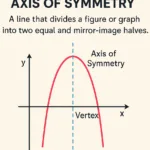Ii
🔊 US Loading... 🔊 UK Loading...The letter “I” is the ninth letter of the English alphabet and one of the five vowels (A, E, I, O, U) essential for forming words. While seemingly simple, “I” has multiple uses and meanings across language, mathematics, science, and cultural contexts. This article explores the significance, uses, and roles of the letter “I” in various fields in a detailed manner.
1. The Letter “I” as a Pronoun
In English grammar, “I” is a personal pronoun used in the first person to refer to oneself. It is always capitalized regardless of its position in a sentence, making it unique among pronouns. The use of “I” is essential in expressing thoughts, actions, or emotions from the speaker’s perspective.
Examples:
- I love reading books in my free time.
- When I arrived at the station, the train had already departed.
The pronoun “I” represents the speaker or writer as an individual. It is central to constructing sentences in the first person and is often one of the first pronouns learned when studying English.
2. The Letter “I” in the English Alphabet
As a letter, “I” is the ninth in the English alphabet. It is a vowel, a type of letter that is essential for forming syllables and words. Depending on its position in a word, “I” can represent different sounds.
Examples of Sound Variations:
- Short vowel sound: The sound of “i” in words like fit, sip, or ink.
- Long vowel sound: The sound of “i” in words like line, fine, or ice.
The phonetic versatility of “I” makes it an integral part of English pronunciation. In addition, the letter appears frequently in words, making it an essential part of both written and spoken communication.
3. “I” in Roman Numerals
In the Roman numeral system, “I” represents the number one (1). This numerical use of “I” dates back to ancient Rome and is still used today in various contexts, such as:
- Numbering chapters in books (e.g., Chapter I, Chapter II).
- Denoting monarchs or leaders (e.g., Queen Elizabeth I).
- Clock faces with Roman numerals (e.g., I for 1, II for 2, III for 3).
The Roman numeral “I” is one of the simplest and most recognizable symbols for numbers, demonstrating the adaptability of the letter across different systems.
4. “I” in Science and Mathematics
The letter “I” holds significant meaning in scientific and mathematical disciplines, serving as a symbol in various contexts:
a) Mathematics
In mathematics, the lowercase “i” is used to represent the imaginary unit in complex numbers. It is defined as the square root of -1, a foundational concept in advanced mathematics.
- Example: ( i^2 = -1 ).
Complex numbers, such as ( 3 + 4i ), are widely used in engineering and physics.
b) Physics
In physics, “I” often symbolizes electric current, which is measured in amperes (A). This usage is essential in the study of electricity and electromagnetism.
- Example: ( I = \frac{V}{R} ) (Ohm’s Law).
c) Chemistry
In chemistry, the letter “I” represents iodine, a chemical element with the atomic number 53. Iodine is a vital trace element in human biology, commonly used in medicine and antiseptics.
5. The Letter “I” in Literature and Philosophy
The letter “I” is deeply symbolic in literature, philosophy, and psychology, often representing concepts of the self, identity, or individualism. Many works of literature and philosophical writings use “I” to explore the human experience, consciousness, and personal perspective.
Examples in Literature:
- Autobiographies: The pronoun “I” is central in personal narratives and memoirs, where the author shares their own story.
- Philosophy: Philosophers like René Descartes used “I” to define consciousness and existence. Descartes’ famous quote, “I think, therefore I am,” emphasizes the role of “I” in self-awareness.
The letter “I” is also a critical symbol in discussions about the ego, personal identity, and individuality.
6. “I” in Modern Communication
In modern digital communication, the letter “I” appears frequently in abbreviations, acronyms, and casual language. Some examples include:
- IT: Information Technology.
- IM: Instant Messaging.
- IQ: Intelligence Quotient.
The prevalence of “I” in such abbreviations highlights its importance in contemporary contexts.
7. The Importance of “I” in Everyday Use
The letter “I” is one of the most commonly used letters in the English language. It serves as:
- A key pronoun for self-expression.
- A critical component in forming words and sounds.
- A universal symbol in various disciplines.
Beyond its linguistic importance, “I” plays a role in shaping personal identity and cultural communication.
8. Fun Facts About the Letter “I”
- Shortest Word: “I” is one of the shortest words in the English language, consisting of just one letter.
- Global Usage: Many languages use a similar sound or letter for the first-person pronoun, such as “Ich” in German or “Io” in Italian.
- Vowel Status: “I” is always considered a vowel, but it often acts as a semi-vowel in some cases, such as in the word onion.
Conclusion
The letter “I” is far more than just a letter in the alphabet. Its roles as a pronoun, a vowel, a Roman numeral, and a scientific symbol underscore its versatility and importance across disciplines. Whether used to express individuality, denote numerical values, or symbolize scientific concepts, “I” continues to play a pivotal role in language, culture, and communication. Its universal applications highlight its significance in everyday life, making it a fundamental element of both written and spoken English.
Table of Contents
Additional Insights

Parallel Axis Theorem – Definition, Formula, Derivation & Applications

Axis of Symmetry: Definition, Equation, and Real-Life Applications

X and Y Axis: Definitions, Graphs and Examples
Coconut Spanish Translation

Cashew Spanish Translation
Axis Definition and Meaning

Walnut in Spanish Translation

Almond in Spanish – Translation and Meaning
